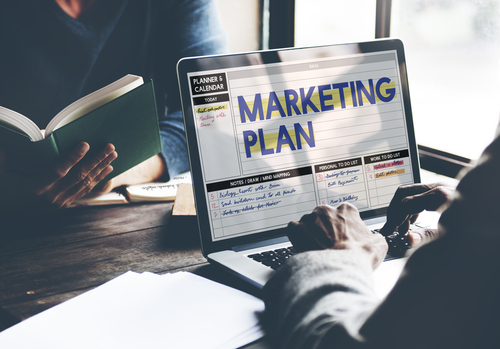
Today’s economy is increasingly digital, and you can see that change reflected in marketing tactics. Think back to when companies primarily marketed through catalogs, postcards and letters urging people to avail of free or discounted offers. Now, most of them appeal to people through the internet.
The physical ads they do use often have digital aspects, too. For example, a person might aim their smartphone at a particular part of a poster to launch a digital experience.
The rise of the digital economy means marketers have to adjust their efforts. What worked well 10 years ago may be irrelevant now. Here are four tips to help marketers excel in this digital world.
1. Cater to How People Gain Information
The activities people do to learn about products before purchasing them have changed due to the digital economy. They have more resources to use so that the knowledge they get comes to them on their schedules and in the chosen format.
A 2019 Think With Google study found that people switch between information formats when learning about things they want to buy. For example, 55% of those polled start by doing a Google search about a product. Then, they go to YouTube to learn more about it. The top reasons that people look for videos are to see a product before buying it or understand more about how other people use it.
Your marketing strategies should take this multichannel approach into account. Ensure that people can find your website through Google, but think about maintaining a YouTube channel to assist them, too.
Also, don’t overlook your social media channel. A Smart Insights compilation of 2020 social media statistics featured a relevant GlobalWebIndex chart that showed how 43% of people globally research products via social media and 27% discover new products there through ads on such channels.
2. Maintain a User-Friendly Website
When people interact with a brand online, they expect an experience that’s as seamless and enjoyable as possible. Perhaps your website primarily describes services and urges visitors to contact the company to learn more. Or, maybe you have an e-commerce destination where people can buy things. In those cases and others, spend plenty of time determining which features make your website function smoothly and benefit viewers.
If you have a blog, for example, consider adding features so that people can search for topics by keyword. Also, provide links at the bottom of each post to direct readers to similar content. Then, if your website sells things, let users filter their results by aspects like price, relevancy and top-selling products.
When making changes to a website, don’t count on visitors responding well to them based on assumptions. Instead, take a practical approach by A/B testing the alterations. It involves showing people two versions of something, and measuring which one performs best. A/B testing boosts your company’s bottom line by improving your return on investment.
Some of the website elements you might test include calls to action, button size or color, search bar placement and shopping cart page layout. The results of an A/B test give you the confidence to support making tweaks.
3. Invest in Video Marketing
A 2020 report from Wyzowl found that 92% of marketers consider video an important part of their strategies. If you aren’t using video regularly, now may be the time to start. That’s especially true now that the COVID-19 pandemic forces more people to be at home. Video marketing allows them to consume the content whenever and wherever as long as they have an internet connection.
Think about what you want to achieve with video marketing, and craft your output around that. For example, are you trying to build your brand’s authority, or do you want to use the video to show people how to benefit from your products? Those are two of the many valid reasons to depend on video marketing.
4. Draw Attention to Convenience Aspects
Another way to succeed, given our increasingly digital economy, is to highlight why whatever you offer makes life more convenient for the target audience. Non-digital marketing methods take that approach too, but you can focus on aspects of the internet with this tip.
The ongoing pandemic means more people shop online now, and they often buy things they’d otherwise only purchase in person. No one knows how long it might be before things return to relative normalcy, but something clear now more than ever is there’s almost no limit to what you can buy online.
For example, a site called Carvana lets people purchase vehicles online and get them as soon as the next day. It recently started offering “touchless delivery” so that people do not need to come in contact with the delivery driver. The online realm also supports people taking care of needs on a schedule that suits them.
With that in mind, you could discuss how your site or service enables people to learn, shop, get entertained or enjoy another related benefit, any time they want.
Pursue Flexibility in Your Marketing Efforts
Excellent marketing in today’s landscape is all about giving the people the flexibility they need and want. Facilitate that reality in all applicable ways, whether that means offering people contact-free delivery options or establishing an online knowledge hub where people can learn what makes your company stand out — even if they choose to do that research in the middle of the night.
When your marketing efforts reflect people’s individual preferences, you’ll be well-equipped to thrive. Always monitor for new developments, too, so you can respond to them promptly.
